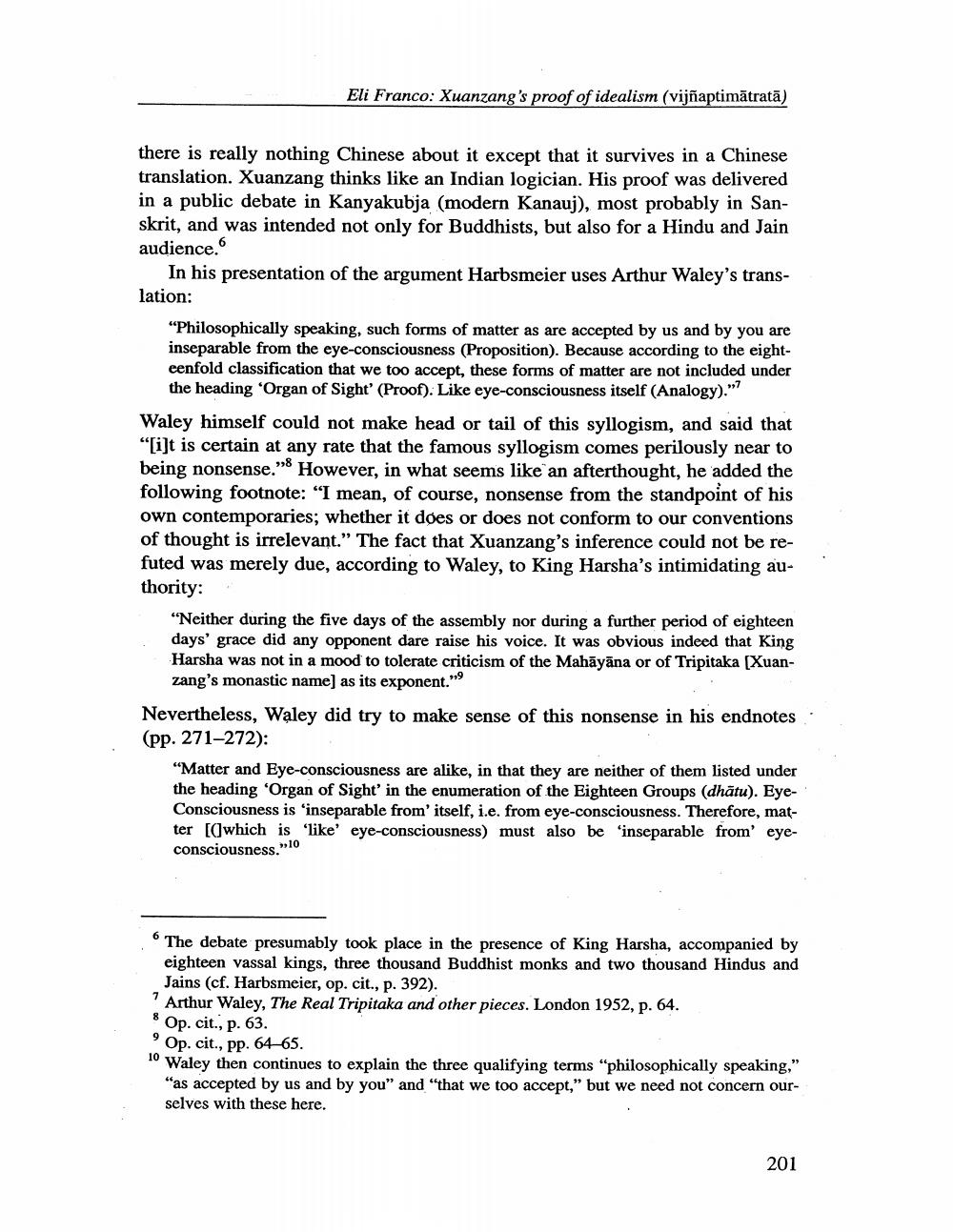________________
Eli Franco: Xuanzang's proof of idealism (vijñaptimātratā)
there is really nothing Chinese about it except that it survives in a Chinese translation. Xuanzang thinks like an Indian logician. His proof was delivered in a public debate in Kanyakubja (modern Kanauj), most probably in Sanskrit, and was intended not only for Buddhists, but also for a Hindu and Jain audience.
In his presentation of the argument Harbsmeier uses Arthur Waley's translation:
"Philosophically speaking, such forms of matter as are accepted by us and by you are inseparable from the eye-consciousness (Proposition). Because according to the eighteenfold classification that we too accept, these forms of matter are not included under
the heading 'Organ of Sight' (Proof). Like eye-consciousness itself (Analogy)."' Waley himself could not make head or tail of this syllogism, and said that “[i]t is certain at any rate that the famous syllogism comes perilously near to being nonsense." However, in what seems like an afterthought, he added the following footnote: “I mean, of course, nonsense from the standpoint of his own contemporaries; whether it does or does not conform to our conventions of thought is irrelevant.” The fact that Xuanzang's inference could not be refuted was merely due, according to Waley, to King Harsha's intimidating authority:
"Neither during the five days of the assembly nor during a further period of eighteen days' grace did any opponent dare raise his voice. It was obvious indeed that King Harsha was not in a mood to tolerate criticism of the Mahāyāna or of Tripitaka (Xuan
zang's monastic name) as its exponent." Nevertheless, Waley did try to make sense of this nonsense in his endnotes (pp. 271-272):
"Matter and Eye-consciousness are alike, in that they are neither of them listed under the heading 'Organ of Sight' in the enumeration of the Eighteen Groups (dhātu). EyeConsciousness is 'inseparable from itself, i.e. from eye-consciousness. Therefore, matter [(which is 'like' eye-consciousness) must also be 'inseparable from eyeconsciousness."10
The debate presumably took place in the presence of King Harsha, accompanied by eighteen vassal kings, three thousand Buddhist monks and two thousand Hindus and Jains (cf. Harbsmeier, op. cit., p. 392). ? Arthur Waley, The Real Tripitaka and other pieces. London 1952, p. 64. 8 Op. cit., p. 63.
Op. cit., pp. 64-65. 10 Waley then continues to explain the three qualifying terms "philosophically speaking,"
"as accepted by us and by you" and "that we too accept," but we need not concern ourselves with these here.
201




